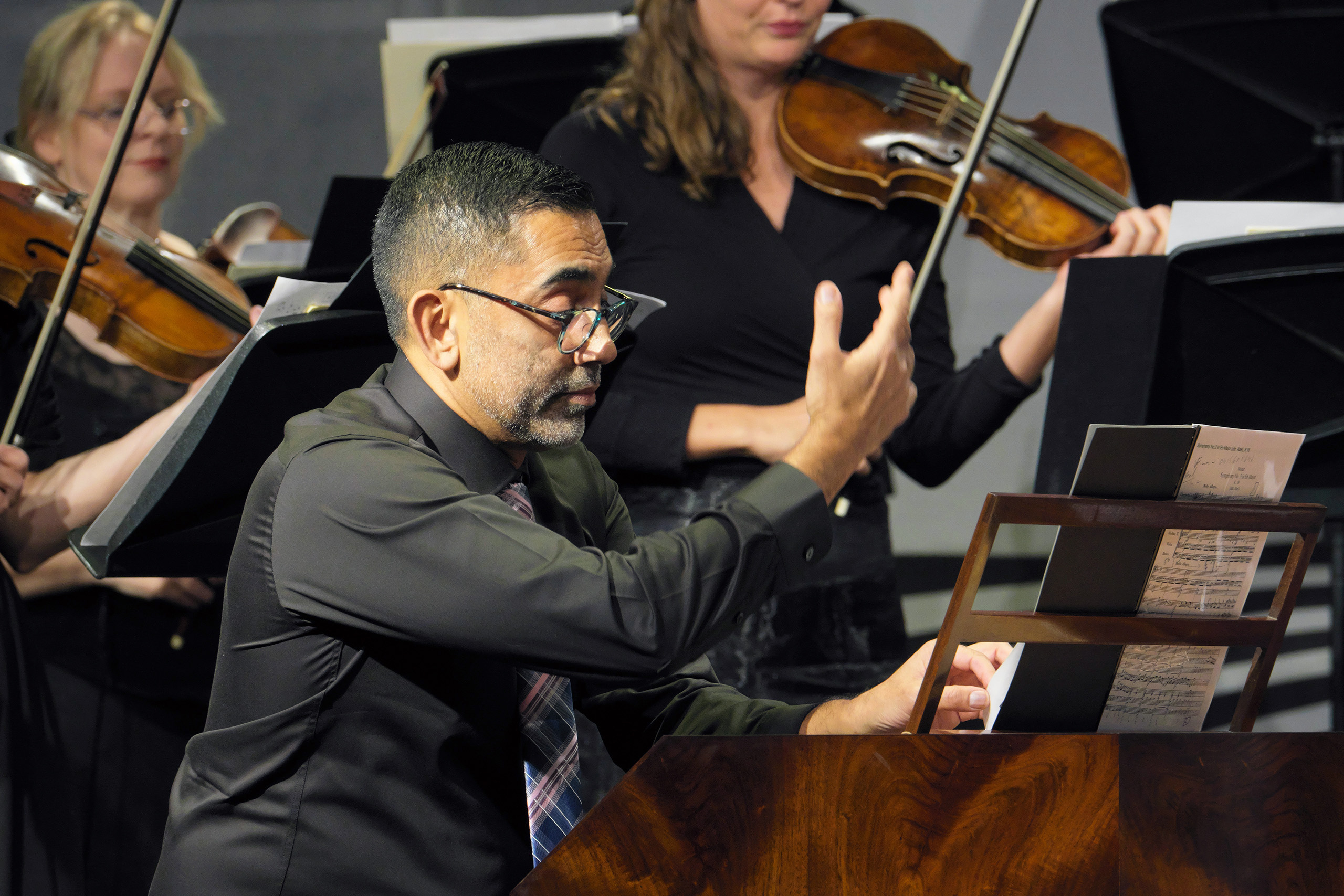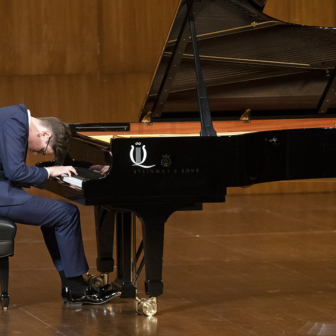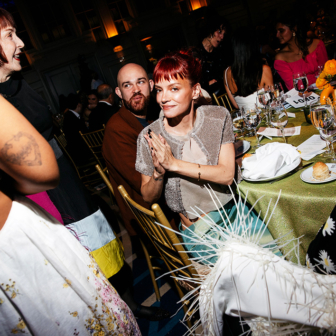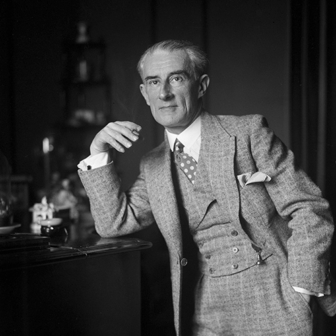It is unlikely you will have heard of Clive Brown. I hadn’t until Neal Peres Da Costa told me he was his hero.
Peres Da Costa is one of Australia’s leading classical keyboard players. You will find him in our concert halls sitting at a harpsichord or organ or historical piano — a fortepiano from Mozart’s day or a later nineteenth- or early-twentieth-century model. You are far less likely to find him at a shiny black Steinway. His career has been devoted to what musicologists like to call HIP — historically informed performance — and that’s where Professor Brown comes in.
Brown is the author of Classical and Romantic Performing Practice. In the 1990s he ran the music department at Leeds University, where he supervised Peres Da Costa’s PhD. Brown opened the Sydneysider’s eyes to the fact that there was more to playing old music than finding the right instruments — wooden flutes, valveless horns and trumpets, violins with gut strings, harpsichords and fortepianos. It was also how you played them. And it wasn’t necessarily a matter of trying to be authentic.
“HIP is not about recovering the past, which can’t be done,” Peres Da Costa explains, “but about expanding musical choices and keeping classical music alive, spontaneous and fresh. I absolutely love that. Clive Brown opened my eyes to the fact that whether working with period or modern instruments — or voices — a HIP approach might be better served by considering the expressive practices that composers of the past didn’t notate in their scores; and how notational practices have come to mean different things than they once did. What I had assumed about historical performance up until meeting Clive got turned on its head during my PhD.”
At the end of a century in which the printed score had become the absolute authority in the performance of classical music, Brown’s idea that it might not represent the last word on the subject — or even the first — was radical. But just because something wasn’t notated by a composer, doesn’t mean it wasn’t expected.
The most obvious case is ornamentation — those embellishments that singers and players can bring to the notes on the page. Before the twentieth century, composers certainly expected that expressive decorations would be added by performers. Sometimes, indeed, they complained about the practice. And when it came to matters of tempo we know from contemporary accounts that even metronome marking (a practice that began in the early nineteenth century) was not something to be followed rigidly. As Peres Da Costa says, there have been “myriad ways in which individual performers must surely have brought their own tastes to bear in applying those unnotated, artistically driven practices.”
When Neal Peres Da Costa’s family moved to Australia in 1969, his parents wanted to give him and his sister the musical education their own parents hadn’t been able to afford. He began piano lessons at his primary school “with a very kind nun” and, at high school, progressed through his grades, as talented students generally will, and entered competitions. At Sydney University he was mentored, along with hundreds of others, by Winsome Evans, harpsichordist, scholar and founder of Sydney’s Renaissance Players.
“She fostered my interest in early keyboards and my love of enquiry and research. It was a heady time as it coincided with the acceleration of HIP in Europe.” He mentions Christopher Hogwood’s Academy of Ancient Music, Trevor Pinnock’s English Concert, Concentus Musicus Wien under Nikolaus Harnoncourt, and figures such as the harpsichordist Gustav Leonhardt and recorder virtuoso and conductor, Frans Brüggen, conductors Roger Norrington and John Eliot Gardiner and fortepianist Malcolm Bilson, all of them releasing dozens of recordings that made the case for their way of playing the music of Bach, Handel, Vivaldi, Haydn, Mozart and Beethoven.
“I’ll single out Malcolm Bilson for his monumental Mozart piano concerto recordings with John Eliot Gardiner and the English Baroque Soloists,” Peres Da Costa says. “He fired me up about the fortepiano, and contributed greatly to re-establishing that instrument as a bonafide concert instrument.”
It’s important to remember, however, that interest in the sounds and styles of baroque and classical music didn’t begin in the 1980s. And Peres Da Costa is quick to add to his pantheon the name of Arnold Dolmetsch, who was active from the late nineteenth century as a player and builder of lutes, viols, harpsichords and recorders. And it is to nineteenth-century musicians that Peres Da Costa, inspired by Clive Brown, has increasingly turned in his quest to find satisfactory approaches to eighteenth-century music. In particular, he discovered the playing of the German composer and pianist Carl Reinecke (1824–1910), and that changed everything.
Reinecke was born when Beethoven and Schubert were still alive. He met Mendelssohn, Schumann and Liszt, taught Grieg and, in old age, made piano-roll recordings of Mozart concertos. Listening to Reinecke playing the slow movements with rhythmic freedom and a generous amount of embellishment made Peres Da Costa reconsider everything, in particular the notion of the score as bible.
“Could this be how it sounded in Mozart’s time?” he wondered. “What do I do now?”
Reinecke had developed as a pianist in the 1840s, so either there had been a revolution in performing style in the previous twenty or thirty years — after the deaths of Mozart, Haydn, Beethoven and Schubert — or they expected their music to be performed in Reinecke’s manner.
“It led me to listen to other recordings made at the turn of the twentieth century by musicians trained as far back as the 1830s and 40s, and to develop new ways of extrapolating backwards to reimagine the sound world of earlier periods,” says Peres Da Costa.
“I believe that there was a continuum of practice prior to the evolution of modern style in the twentieth century stretching back several centuries, and research points to this,” he goes on. “Vital ingredients included improvisationally applied expressive practices such as tempo modification, rhythmic alteration, sliding effects (portamento), trembling effects (vibrato), varied tonal colours, phrasings signalled by slurs, staccato, portato (slurred staccato), dynamics and accents, ornaments and ornamentation and keyboard arpeggiation. These will have varied in different periods and places and depending upon the performer. But it is these practices which are conspicuously missing in today’s renditions of historical music, whether on period instruments or not.”
Peres Da Costa’s recent recording of Mozart’s A major piano concerto, K. 488, with the Australian Romantic & Classical Orchestra puts his research into practice. In addition to flexibility of tempo and much ornamentation, the pianist improvises a connecting interlude between the first and second movements carrying the music from the A major or the first to the F sharp minor of the second.
Equally radical is his recording, with the tenor Koen van Stade, of Schumann’s 1840 song cycle Dichterliebe. The piano accompaniment is again full of rhythmic freedom, chords are arpeggiated (the notes played one after the other instead of together) and there are places where the pianist’s right and left hands don’t move exactly in step. Even more striking is the singer’s use of a quasi-spoken tone and his willingness to slide between notes, which to modern ears sounds rather melodramatic. But this is the point, and from a historical point of view, it seems to predict the spechstimme of Arnold Schoenberg’s Pierrot lunaire (1912). Schoenberg never made any secret about his work coming from the German tradition of melodrama, but still it is a remarkable connection to hear.
I was curious to ask Peres Da Costa whether he felt there was a historical cut off for HIP. How recent can music be and still benefit from a historically informed approach? After all, when it comes to Elgar or Ravel, let alone Stravinsky, we can hear how the composers themselves played their own music.
“There’s no end to it in my opinion,” he says. “HIP applies to music written one minute ago. Because we still, in general, commit musical compositions to notation, there will always be questions about what that notation meant to the composer, and what it signalled to contemporary performers.
“We have Ravel and Debussy on piano rolls playing their own music. Their notation does not reveal how they played in reality. Stravinsky often advised that the job of the performer was to realise the music as notated by the composer, nothing more, nothing less. His various recordings of Firebird and other works reveal substantially different interpretations that could hardly have been envisaged from his notation. Even Webern’s Op. 27 Variations for piano have traits of romantic style in the playing of Peter Stadlen (the pianist who first played them in 1937): tempo modification, manual asynchrony and so on.”
I tell Peres Da Costa that the composer Pierre Boulez once told me that when Le Marteau sans maître was first being performed in the 1950s, xylophonists all played with two sticks, whereas now they use four. He said he couldn’t imagine what could be gained from returning to two sticks in the name of authenticity when, as the composer, he was far more satisfied with four.
“But why are we stuck on authenticity?” Peres Da Costa replies. “What does playing with two sticks on the xylophone afford that four sticks won’t reveal? Perhaps if it’s more of a technical struggle with two, some quirky, expressive things will come out that won’t with four and the knowledge of that might provide inspiration for different readings using four sticks. This way of thinking can be extrapolated to all other instruments and to voices.
“Knowledge of historical styles (which can in the end only be scant) is important as a tool for inspiration, for freedom, for expansion, for choice. For someone like me, grappling with the question of style seems to bring a kind of connection with the past — it’s a very personal thing. This, in itself, might provide confidence that what one is doing has value — again it’s personal. Some need it and some don’t. I find it endlessly fascinating, and I love the connection with the past and bringing that into the present.” •




